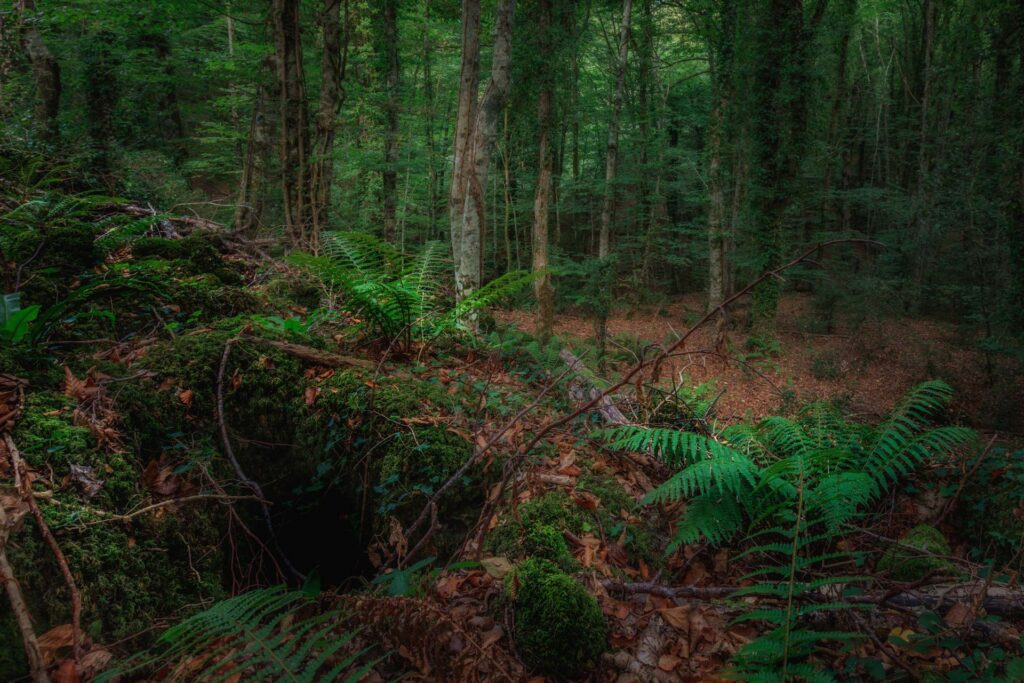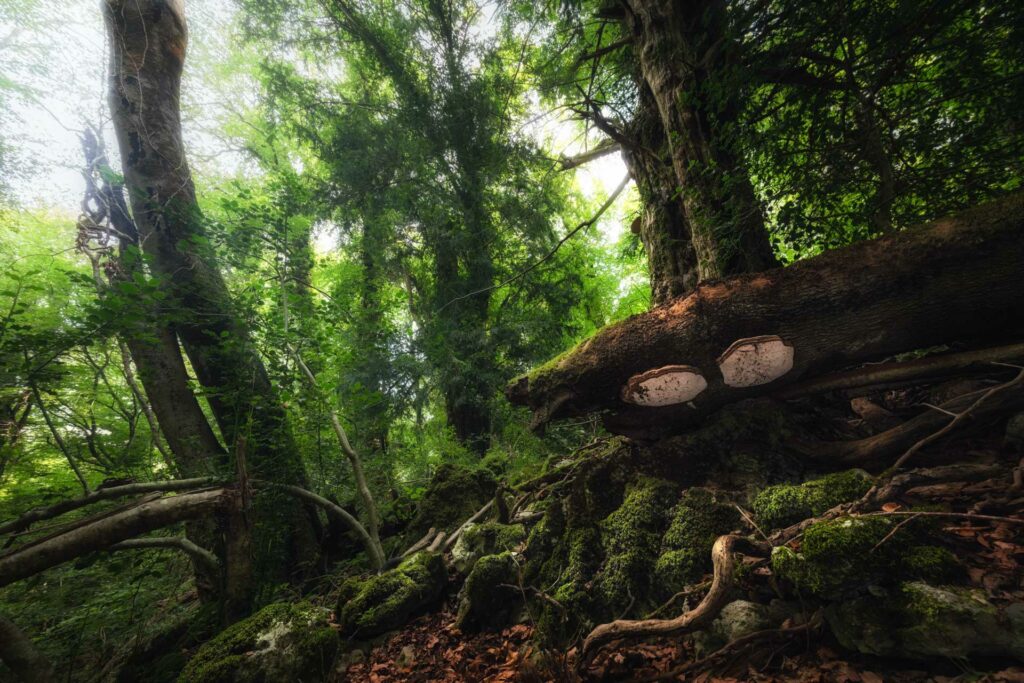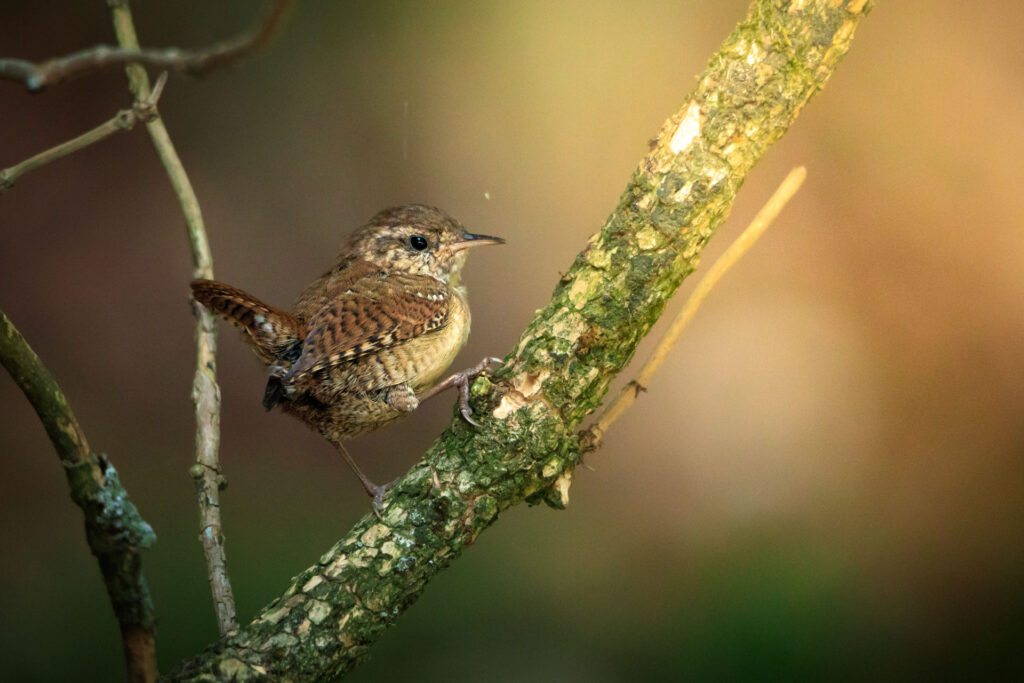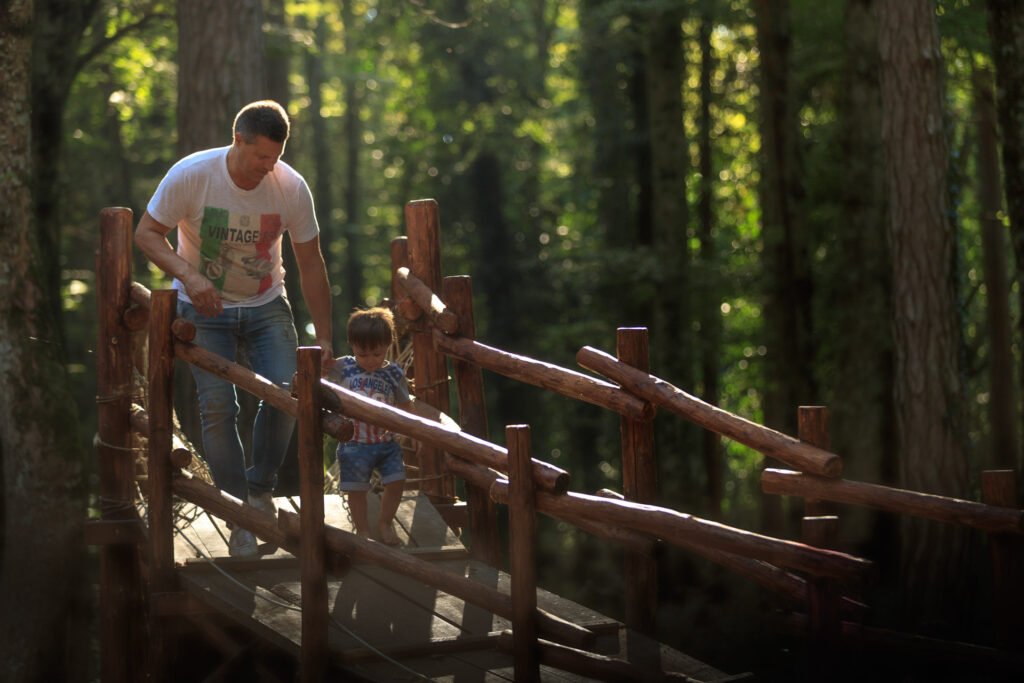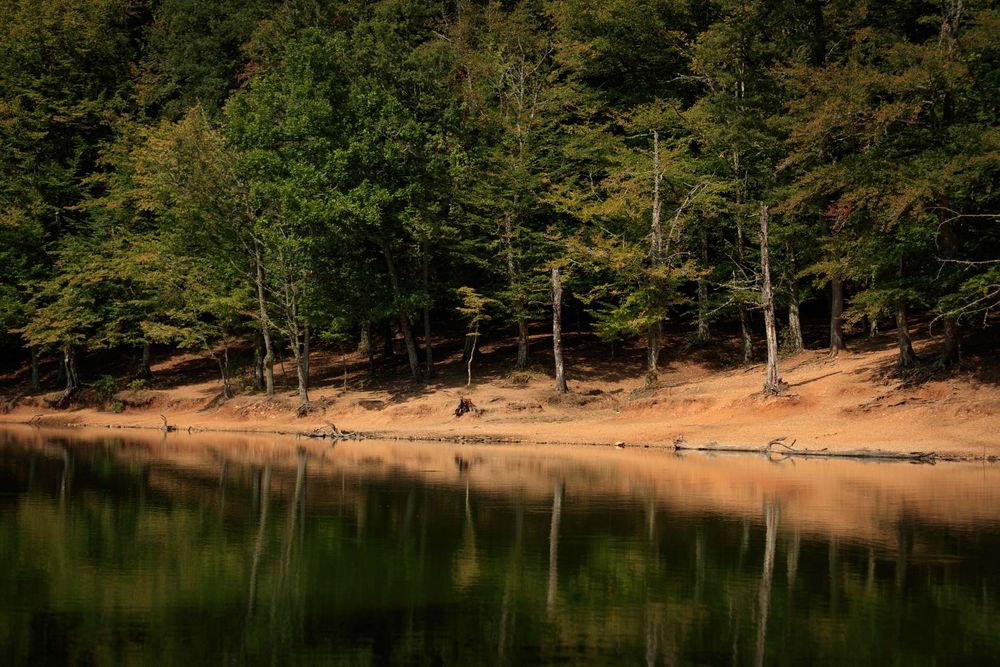Gargano National Park
The area
Gargano National Park protects a promontory covered with coastal forests of pines and holm oaks and with almond, orange, and olive cultivation. The flat and sandy coast in the north gradually becomes precipitous, with steep calcareous coastal cliffs overlooking little coves of extremely fine sand, very busy during the summer. In the inland areas, the vegetation of Foresta Umbra dominates the promontory with beech trees and pines: it is the heart of the National Park.
The luxuriant vegetation of Gargano – probably the most thriving in Southern Italy – has drawn the interest of researchers studying plants and forests, for two main reasons: first of all, for its great abundance which makes the promontory easily recognizable from a distance; secondly, because coming down from the north of the Peninsula, it represents the first and complete example of Mediterranean vegetation. In fact, the flora of Gargano includes about 2,300 vascular species, that is over 33 per cent of the Italian vegetal species, making this territory one of the most interesting “floristic districts” of Italy.
Gargano Promontory, stretching out into the South Adriatic Sea for about 60 km, is on average 30 km wide and covers an area of about 210,000 hectares. Its highest summit is Monte Calvo (1,065 m), followed by Monte Nero (1,012 m), and Monte Spigno (1,008 m). Clearly separated from the mountains of the Apennines by the vast plateau of Tavoliere delle Puglie, this unique territory is characterized by a very heterogeneous climate changing according to altitude and exposure: from a Mediterranean climate with very dry summers in the coastal stations (550 mm of annual rainfall) to a Mediterranean climate with significant rainfall during the autumn and the winter in the stations of the elevated inland areas (1,200 mm in Foresta Umbra).
In addition, climate is heavily influenced by exposure, because the cold winter winds coming from the north cause drops in temperatures and significant humidity (moisture in the air), to the extent that the Mediterranean vegetation only covers a narrow strip of land in the northern section of the promontory, while the deciduous forests almost reach the sea level. In the south, forests only grow at higher altitudes, and holm oak forests can be found from 600-700 m above sea level.
The Park protects an outstanding concentration of different habitats: from steep and rocky coasts to the warm and deep narrow valleys of the southern slope, rich in rare and endemic species of plants and animals, to the inland beech forests with their centuries-old specimens and the Mediterranean Aleppo pine forests with trees older than 500 years.
Foresta Umbra is what remains of the primeval and thousand-year forest of Gargano Promontory and it is the most representative environment of its inland areas. Despite the devastation and insane deforestation carried out in the past three centuries, which stripped the forest bare on the hills and mountains of Gargano, Foresta Umbra has preserved an almost intact luxuriant vegetation with a rich variety of tree species, herbaceous and shrub formations. The explanations for the meaning of the name “Foresta Umbra” are lost in time and all of them, even though acceptable, are not sufficiently proven and do not provide a clear interpretation of the name. According to someone, the name Umbra would derive from the ancient tribe of the Umbri (a prehistoric tribe belonging to the Celtic group), who inhabited the forest and carried out raids against the nomadic shepherds living in the more fertile plains of the promontory; according to others, it could derive from “shady place” (the Italian word “ombra” means “shade”).
The forest
The National Park includes the “Umbra Forest”, the forest area that represents the heart of the promontory. This occupies an area of about 15,000 hectares and includes Umbra and Falascone Biogenetic Nature Reserves, where we find the oldest beech woods, and the Sfilzi Integral Reserve, a transition area between beech and Turkey oak woods, created to protect the only mountain spring of the Gargano. These important State Reserves, together with other surrounding portions, have obtained recognition by UNESCO.
The Sfilzi Integral Reserve extends along the slopes of the Carpinosa Valley, upstream of the Fonte di Sfilzi, the only perennial spring existing in the mountain area of the Gargano. It is a very well-preserved strip of forest where, in addition to a very rich vegetation, interesting thermal inversion phenomena can be observed: the beech is located in the cooler valley floor, while at higher altitudes you can find the Turkey oak, the downy oak and even, in the sunniest exposures, typical essences of the Mediterranean maquis.
The Biogenetic Reserves of Falascone and Umbra, on the other hand, are rare examples of mixed beech forest, with a very high variety of exceptionally large tree species (maples, lindens, hornbeams, hollies and above all yew trees) unique in their kind. Here, the beech manages to reach 350 years of age and a height of 45 meters, bearing in mind that in similar situations it does not exceed 250 years and 35 meters in height.
Gargano has been inhabited by humans since the Upper Paleolithic period (25,000 – 30,000 years ago), and the Foresta Umbra, along with other important woodlands, represents the core of the ancient Nemus garganicum mentioned by Ovid, Strabo, Horace, and Virgil, which covered the whole promontory until the 1700s.
The history of the Foresta Umbra is a confusing and painful succession of conquests, usurpations, and transfers by local kings and princes, Lombards, Byzantines, Saracens, Normans, Swabians, and Angevins, who, in turn, seized forests, villages, and sanctuaries, plundering whatever they found. The first certain information dates from the second half of the 16th century when a nobleman, Girolamo Grimaldi, acquired the vast territory surrounding Monte Sant’Angelo, including the forest, from another feudal lord for 30,000 ducats. The Grimaldi family held this property for two and a half centuries, until the time of the Napoleonic occupation when, fearing the abolition of the fief, Maria Grimaldi, Princess of Gerace, attempted to sell the Foresta Umbra to the Municipality of Monte Sant’Angelo.
However, Gioacchino Murat’s government called off the sale due to the princess’s debts to the state, and all assets were expropriated. The estate remained state-owned upon the return of the Bourbons, and in 1861, with the fall of the Kingdom of the Two Sicilies, it became the property of the new Kingdom of Italy. Almost immediately, in line with the liberal spirit of the prevailing ideas at the time, it was proposed for sale. Only due to the confusion and contradictions in the measurement and appraisal operations and the unsuccessful auctions it was finally declared non-transferable and handed over to the Forestry Administration in March 1866, with Law No. 3,713. The area consists of a beautiful, typical Garganic beech forest, with irregular but not overly rugged topography, growing on soils with excellent water-holding capacity.
The biodiversity
The predominant vegetation of the Reserves Foresta Umbra and Falascone consists of beech high forest with a multilayered and very complex structure, enabling an excellent development of the shrub and herbaceous layers, both extraordinarily rich in species. Here, the Beech Tree is associated with the Common Hornbeam, the European Hop-hornbeam, with maples, limes, elms, ashes, with the Manna Ash and the Yew, and in the shrub layer, with the Butcher’s Broom, the Holly, and the Daphne. In the Reserve of Falascone, there are thousand-year-old yew trees, whose hard wood spared them from axes and saws.
The herbaceous vegetation includes a great number of multicolored species which complete their life cycle during the short spring, before the thick shadow of beech trees can preclude them from the essential access to light. Among the others, an endemic species like the Adriatic Bellflower is worth mentioning.
The Strict Nature Reserve of Sfilzi is dominated by the typical vegetation of the contact area between the Beech Tree and the Turkey Oak. Thanks to the various exposures influencing microclimate, there are several tree species associated with the Beech Tree: the Italian Maple, the Field Maple, the Common Hornbeam, the European Hop-hornbeam, the Turkey Oak, the Sessile Oak, the Holm Oak, the Lime, the Elm, the True Service Tree, the Crab Apple, the Bay Laurel, the Strawberry Tree, and the Terebinth.
Getting here
The Reserves are accessible by car from highway A14 Adriatica, exit Poggio Imperiale-Lesina. Then take the Gargano freeway to Vico del Gargano and follow the directions to Foresta Umbra-Monte Sant’Angelo.
More generally, the National Park is accessible by motorboat, by ferry, and by hydrofoil form the ports of Termoli (all year round), Vieste, Rodi Garganico, Peschici, and Capoiale (June-September). By train, you can reach the railway stations of Termoli, Foggia, and San Severo. By plane, the nearest airports are Bari-Palese and Naples-Capodichino – about 150-200 km far from the various localities of Gargano – offering public transport and car rental services.
The trails
Foresta Umbra is crossed by 14 trails created by the former State Forest Service, today Forest Carabinieri, starting from old trails and mule tracks easily accessible on foot and by mountain bike. At each trailhead and at the main intersections, you will find wooden trail signs with the name of the localities where the trail starts and arrives, as well as the estimated hiking time. Along the trail, you can orient yourself thanks to the yellow markings on trees. Out of the several existing trails, two are particularly useful to discover the beech forests inscribed on the UNESCO World Heritage List, as well as the National Park and the Reserves of Falascone and Sfilzi.
1. In the Reserve of Umbra
Nature Trail for disabled persons
- Distance: 500 m
- Elevation: very little
- Estimated hiking time: 30 minutes
- Difficulty level: easy (the dirt and mainly flat trail is also accessible to persons with mobility impairments).
The trail develops around Cutino d’Umbra, the only stretch of water surviving during the summer in Foresta Umbra. It starts from the access on road SP 52 bis “Umbra – mare” and ends where the trail “Cutino d’Umbra – Falascone” starts. This first stretch is provided with specific interpretive panels, also in Braille. The trail is open to the public all year round, and the access is free. If you want to take a longer trail, you can continue along trail “Cutino d’Umbra – Falascone”, as well as along other trails developing nearby.
2. In the Reserve of Sfilzi
Trail “Fonte Sfilzi – Casalini”
- Distance: 8 km
- Elevation: about 300 m
- Estimated hiking time: 4 hours
- Difficulty level: challenging (for the position, the natural trail bed, and the significant elevation, it is only accessible to expert hikers).
The trail develops around the State Strict Nature Reserve of Sfilzi. It starts from road SP 144 leading from Vico del Gargano to Monte Sant’Angelo, near Sfilzi mountain lodge. From here, the trail crosses some stretches of natural forests untouched by man and leads to Fonte Sfilzi, the only mountain spring of Gargano. The morphology of the area, the contact between Turkey oak woodlands and beech forests, and the presence of small valleys with a south-north orientation give the opportunity to observe interesting thermal inversion phenomena and the most typical species of the Mediterranean maquis.
Things to do
Gargano National Park preserves a natural heritage worth discovering: to this purpose, it offers several trails with facilities, accessible to everyone. Foresta Umbra is undoubtedly the most renowned place for hiking in Gargano, thanks to its network of trails with facilities: there are trail signs indicating trailhead location, arrival location, and estimated hiking time and, near the trailheads, there are picnic areas. Along the trails, you will find yellow markings on trees and rocks, which will let you dive into a natural dimension without the fear of getting lost. There are 15 marked trails, all with signposts, locality signs, and trail signs. For signs, hiking rest stops, and fences, materials such as wood and sometimes stone are privileged, making the presence of trails much more discreet.
The charms of Foresta Umbra are enriched by the presence of a nature museum and an information point for visitors, located near Villaggio Umbra. The museum offers a mountain bike rental and the chance to purchase books, maps, informative materials, and gadgets. Inside, it is possible to admire a scale model of Gargano Promontory (1:25.000), lithic artifacts proving the ancient presence of man in Gargano, a xylotheque, giant posters of the main flora and fauna species, and a rich collection of animal taxidermy mounts. The Visitor Center is also home to an information point and is surrounded by some theme trails to walk, rest stops and picnic areas with facilities.
There is also a recreation/education area for children, an innovative way to present the forest environment: hopefully, working on feelings and emotions and stimulating curiosity and imagination, it will prepare children for a more informed and efficient environmental education. Here, they have the chance to play safely in the forest and with the forest: among trees, with balls or their favorite toys, or with wooden construction sets; but also, with broken branches, cones, stones, with earth, on fallen trunks, in the small hut recalling the one built by coalmen or on board the small train recalling the ancient decauville track; even with wooden sculptures representing some inhabitants of the forest, which hopefully will arouse some pleasant feelings. The experimental area is constantly revised and improved, also thanks to the advice provided by teachers, educators, and parents.
There are two theme trails: the trail “Fonte Sfilzi-Casalini”, developing within the State Strict Nature Reserve of Sfilzi, and the theme trail “La rete Natura 2000” (Natura 2000 Network), developing around “Cutino d’Umbra-Falascone”, a depressed area with a waterproof soil, where rainwater forms natural pools called “Cutini”.








